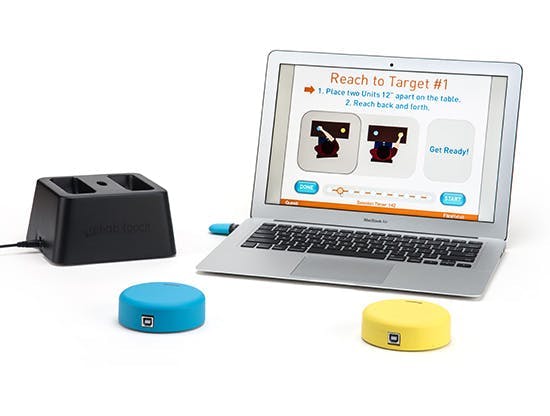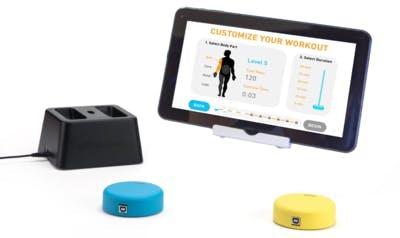Foot drop can dramatically affect a person’s ability to walk, leading to trips, falls, and loss of independence. Fortunately, Functional Electrical Stimulation (FES) offers a promising solution for many individuals living with foot drop after a neurological injury like stroke, brain injury, or spinal cord injury (SCI).
In this guide, we’ll explain what FES is, how it works, and why it’s gaining traction as a rehabilitation and mobility tool. You’ll also learn how FES compares to other treatments and what to consider if you’re thinking about trying it.
Let’s jump in.
What is FES and How Does it Work for Foot Drop
Who Can Benefit from an FES Device for Foot Drop?
What to Expect When Trying FES for Foot Drop
Cost and Insurance of FES for Foot Drop
Can FES Help with Long-Term Recovery of Foot Drop
Understanding Foot Drop Beyond the Physical
Foot drop isn’t a condition in itself. Rather, it’s often a symptom that reflects something deeper going on. While it may result from musculoskeletal conditions or anatomical differences, foot drop is frequently caused by damage to the brain, spinal cord, or peripheral nerves. These injuries to the nervous system interrupt the signals that tell the muscles in your leg to lift the front portion of your foot when you walk.
As a result, your toes may drag on the ground or slap down with each step. Over time, this not only increases the risk of falling but can also lead to fatigue, joint pain, and changes in walking posture that affect the entire body.
But beyond the physical challenges, there’s also an emotional toll. Many people with foot drop describe feeling self-conscious in public, nervous about walking unaided, or frustrated by the slow pace of recovery.
This is where FES can make a meaningful difference.
What Is FES and How Does It Work for Foot Drop?
Functional Electrical Stimulation (FES) is a technique that uses gentle electrical pulses to activate muscles that are weak or paralyzed. For foot drop, these pulses are timed to stimulate the muscles responsible for lifting the front of the foot during walking (usually the tibialis anterior).
What makes FES unique is that it doesn’t just support the body passively like a brace for foot drop would. Instead, it encourages your muscles to move at the right moment, in sync with your natural walking rhythm. Think of it like a smart assistant that nudges your foot at just the right time to help you clear the ground and take a smoother step.
FES devices for foot drop typically use:
- Surface electrodes placed on the lower leg
- A motion sensor (often in the shoe or on the leg) that detects when you begin to swing your foot forward
- A stimulator that delivers a small electrical signal to lift the foot
Over time, this consistent stimulation can help reinforce proper movement patterns and, in some cases, even support brain and nerve recovery.
Who Can Benefit from an FES Device for Foot Drop?
FES isn’t a one-size-fits-all solution, but it has shown strong benefits for many individuals with neurological injuries. If you experience foot drop due to one of the following conditions, FES may be worth exploring:
- Stroke: One of the most common causes of foot drop, affecting 20-30% of all stroke survivors, especially if leg function was affected on one side.
- Multiple Sclerosis (MS): FES can assist when fatigue and muscle weakness interfere with walking.
- Spinal Cord Injury: Those with incomplete injuries may respond well to stimulation if some nerve pathways remain intact.
- Cerebral Palsy: Children and adults may benefit from improved gait mechanics and muscle coordination.
- Traumatic Brain Injury (TBI) or peripheral nerve damage (such as peroneal nerve injury) may also qualify depending on muscle response.
That said, FES requires a functioning lower motor nerve to transmit the signal. In other words, there needs to be at least some activity in the nerve/muscle.
A clinician can help determine whether the muscles still respond to stimulation before recommending a device.
What to Expect When Trying FES for Foot Drop
Starting with FES is a process, not a one-time setup. If you’re curious about using it, here’s what typically happens:
Initial Evaluation
You’ll begin with a thorough evaluation by a physical therapist or orthotist. They’ll assess how you walk, check muscle tone, and place trial electrodes to see how your foot responds to stimulation. If your muscles contract appropriately, you’re likely a good candidate.
Fitting the Device
Once a device is selected, your therapist will fine-tune the settings. This includes:
- Finding the best electrode placement
- Adjusting the intensity so it lifts the foot without discomfort
- Calibrating the timing to match your walking rhythm
Training and Adjustment
Your therapist will walk you through how to wear and care for the device, when to use it, and how to gradually increase walking time. Some people adapt quickly; others may need several sessions to get comfortable.
This is also where the emotional side comes in. Walking with FES often feels different at first. It may be strange or even uncomfortable for the first few days but most users say this fades as their confidence grows.
At-Home Use and Daily Life
Once you’ve been fitted and trained, most FES devices are designed for daily use at home, at work, or out in the community. They’re lightweight, portable, and typically worn under clothing.
Devices vary in size and style. Some have wired electrodes and a foot sensor in the shoe, while newer systems are wireless and use motion sensors strapped to the leg.
Many users report walking with less effort and greater fluidity—even on uneven surfaces or stairs. Some devices also connect to smartphone apps, allowing you or your clinician to track usage, set goals, or tweak settings remotely.
Cost and Insurance of FES for Foot Drop
It’s true that FES devices are an investment. Prices can range from $4,000 to $7,000, depending on the brand and technology.
The good news is that many insurance providers, including Medicare and the VA, may cover FES if it’s deemed medically necessary. The process often requires documentation from your doctor and physical therapist, including:
- A letter of medical necessity
- Gait analysis and clinical notes
- A trial session demonstrating benefit
It may take time and persistence, but many users are ultimately able to get coverage or partial reimbursement.
Can FES Help with Long-Term Recovery of Foot Drop
Here’s where things get exciting. While many people use FES as a mobility aid, research suggests it may also have long-term therapeutic value.
By encouraging the brain to send signals to the leg during walking, FES supports neuroplasticity, the brain’s ability to adapt and form new connections. Over time, this may help improve voluntary control, even when the device isn’t in use.
Studies have shown that with consistent use, FES can lead to:
- Faster walking speeds
- Better symmetry between legs
- Promotes natural gait pattern
- Reduced cognitive demands for walking
That said, every person is different. Some may experience clear improvements in function. Others may primarily benefit from smoother walking and greater confidence.
Is FES Right for You?
Only a qualified clinician can say for sure, but you may be a good candidate if:
- You can walk at least short distances (with or without an assistive device)
- Your foot muscles respond to stimulation
- You’re motivated to practice regularly
FES may not be ideal if you have:
- Complete paralysis of the leg with no response to stimulation
- A pacemaker or implantable defibrillator (check with your cardiologist first)
- Skin issues that prevent electrode use
Even if you’ve struggled with foot drop for months or years, it’s still worth asking about FES.
FES for Foot Drop — Final Thoughts
Foot drop is frustrating. It can hold you back physically, emotionally, and socially. But technologies like FES remind us that recovery isn’t always about “going back” to who you were but about moving forward with tools that make life easier, safer, and more fulfilling.
Whether you’re a stroke survivor looking to walk without fear of tripping, or someone with MS trying to stay active despite fatigue, FES offers more than just stimulation. It offers momentum.
And sometimes, that’s exactly what’s needed to take the next step.














